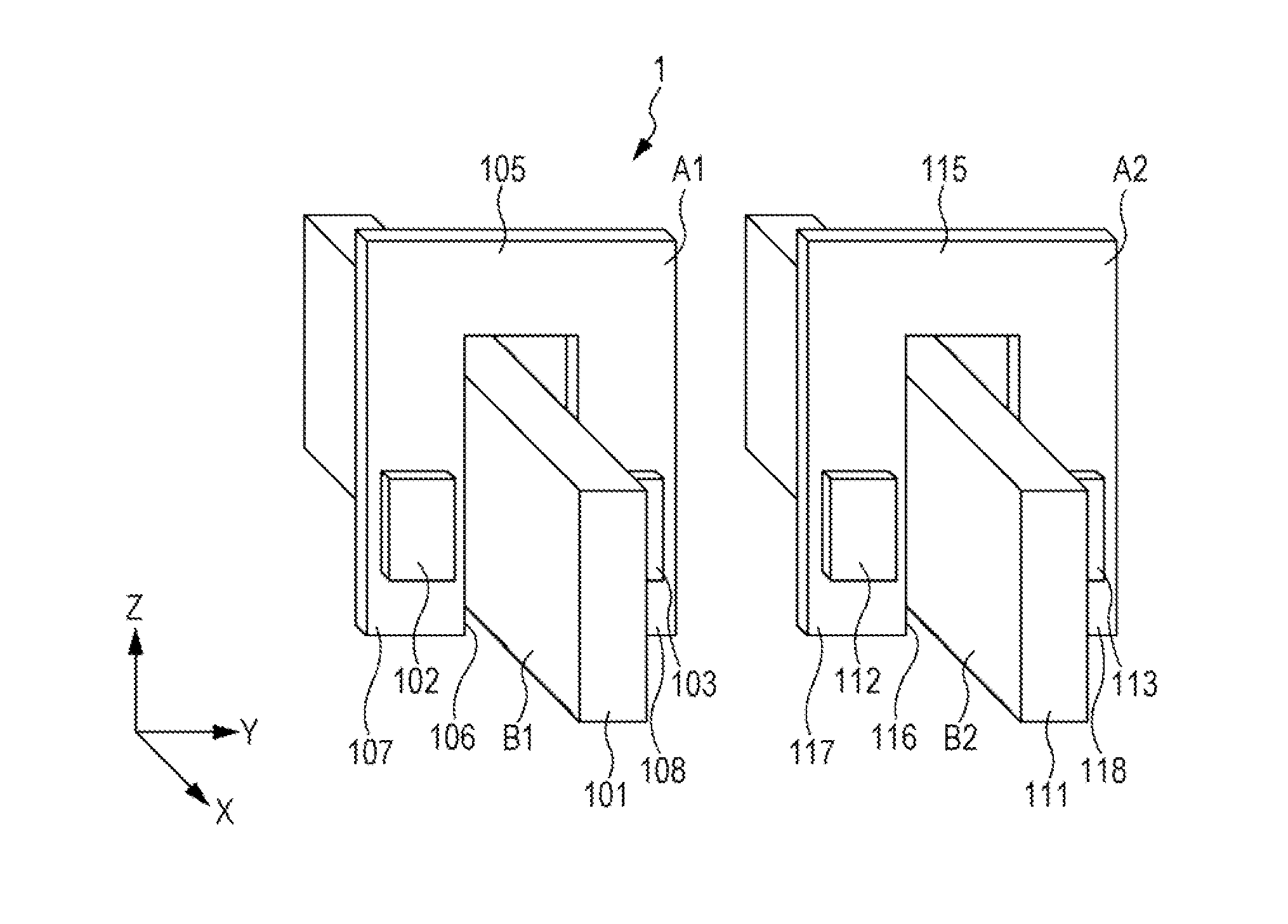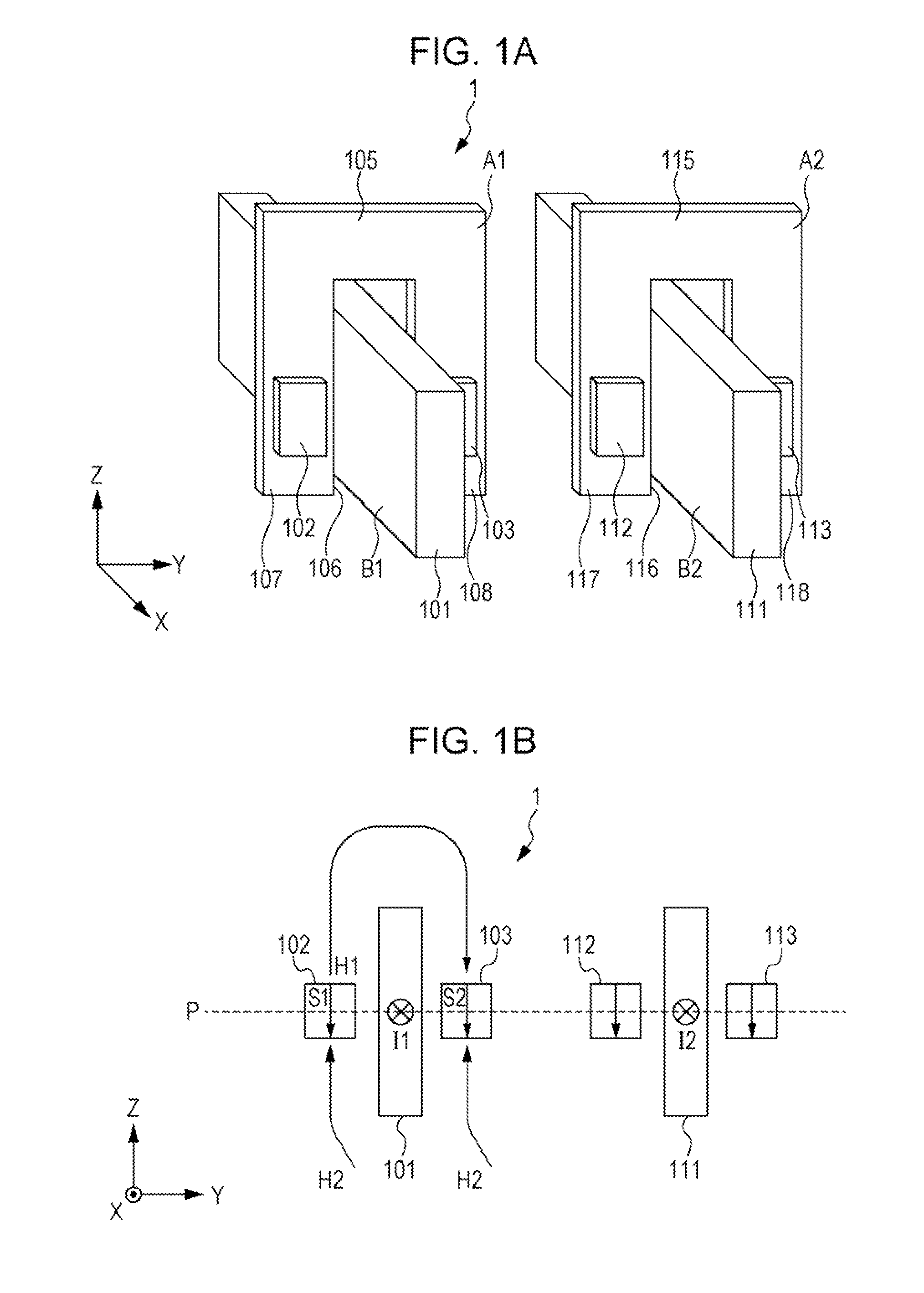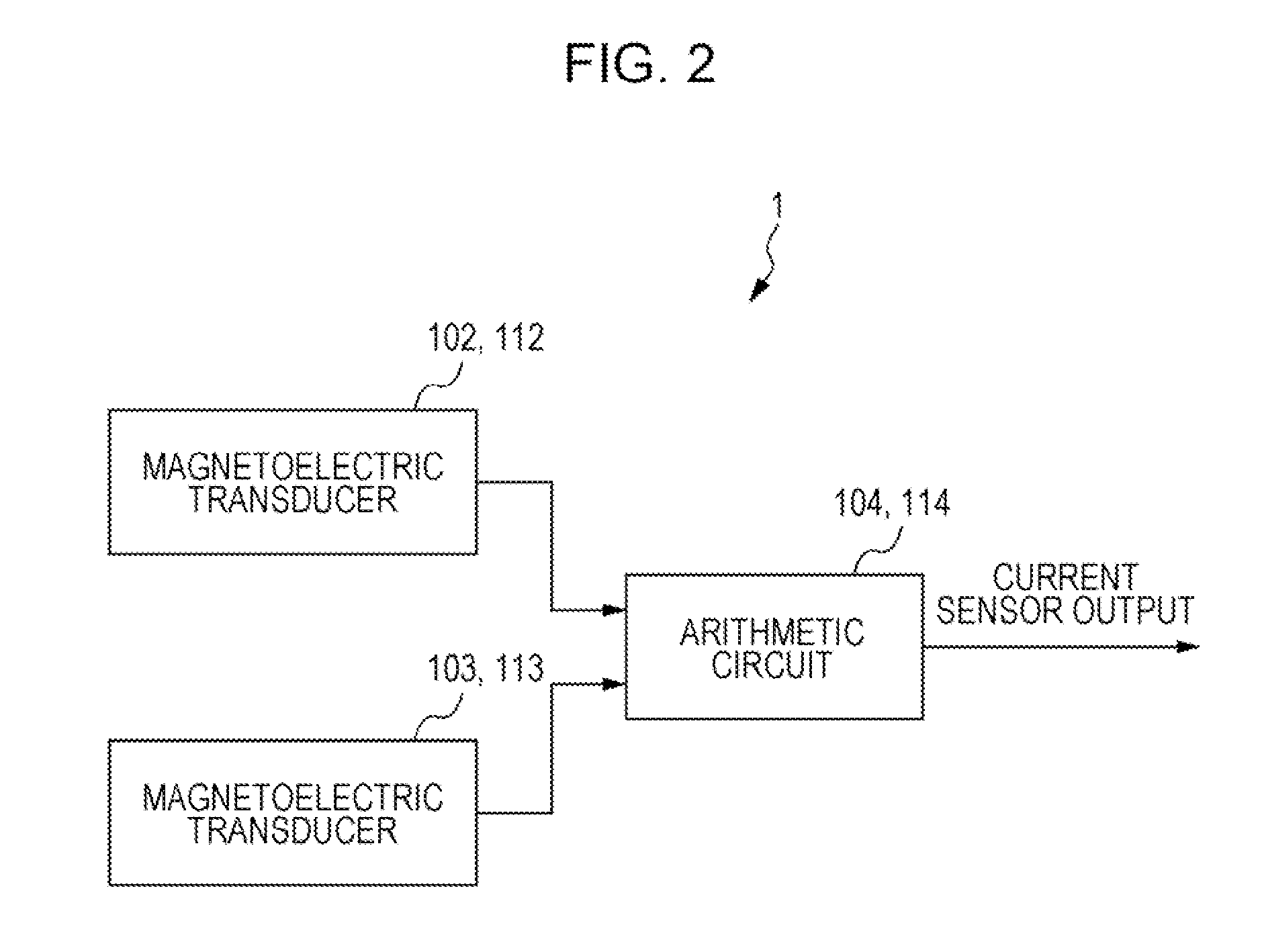Current sensor
a current sensor and sensor technology, applied in the field of current sensors, can solve the problems of unrealistic mounting accuracy and manufacturing cost, and achieve the effects of reducing the electrical reducing the resistance of the first conductor, and suppressing heat generation
- Summary
- Abstract
- Description
- Claims
- Application Information
AI Technical Summary
Benefits of technology
Problems solved by technology
Method used
Image
Examples
embodiment 1
[0031]In this embodiment, a first aspect of a current sensor will be described. FIGS. 1A and 1B are schematic diagrams showing a configuration example of a current sensor 1 according to the embodiment. FIG. 1A is a perspective view schematically showing a configuration of the current sensor 1, and FIG. 1B is a schematic diagram showing a positional relationship between conductors 101 and 111 and magnetoelectric transducers 102, 103, 112, and 113 in the current sensor 1.
[0032]As shown in FIG. 1A, the current sensor 1 includes the conductor (first conductor) 101 and the conductor (second conductor) 111 that form current paths. The conductors 101 and 111 extend in a first direction (X axis direction) and have flat plate shapes parallel to each other. The conductors 101 and 111 have predetermined thicknesses in a second direction (Y axis direction) orthogonal to the first direction and have predetermined widths in a third direction (Z axis direction) orthogonal to the first direction an...
embodiment 2
[0043]In this embodiment, a second aspect of the current sensor will be described. FIGS. 4A and 4B are schematic diagrams showing a configuration example of a current sensor 1a according to the embodiment. FIG. 4A is a perspective view schematically showing a configuration of the current sensor 1a, and FIG. 4B is a schematic diagram showing a positional relationship between conductors 101 and 111, magnetoelectric transducers 102, 103, 112, and 113, and magnetic shields (magnetic yokes) 121, 122, and 123 in the current sensor 1a. It should be noted that many of the components of the current sensor 1a according to the embodiment are the same as the components of the current sensor 1 according to Embodiment 1. Thus, the components that are the same as those of the current sensor 1 are designated by the same reference signs, and the detailed description thereof is omitted.
[0044]As shown in FIG. 4A, in the current sensor 1a according to the embodiment, the thin plate-shaped magnetic shie...
embodiment 3
[0048]In this embodiment, a third aspect of the current sensor will be described. FIGS. 5A and 5B are schematic diagrams showing a configuration example of a current sensor 1b according to the embodiment. FIG. 5A is a perspective view schematically showing a configuration of the current sensor 1b, and FIG. 5B is a schematic diagram showing a positional relationship between conductors 101 and 111, magnetoelectric transducers 102, 103, 112, and 113, and magnetic shields 131, 132, 133, and 134 in the current sensor 1b. It should be noted that many of the components of the current sensor 1b according to the embodiment are the same as the components of the current sensor 1 according to Embodiment 1. Thus, the components that are the same as those of the current sensor 1 are designated by the same reference signs, and the detailed description thereof is omitted.
[0049]As shown in FIG. 5A, the current sensor 1b according to the embodiment also includes the thin plate-shaped magnetic shields...
PUM
 Login to View More
Login to View More Abstract
Description
Claims
Application Information
 Login to View More
Login to View More - R&D
- Intellectual Property
- Life Sciences
- Materials
- Tech Scout
- Unparalleled Data Quality
- Higher Quality Content
- 60% Fewer Hallucinations
Browse by: Latest US Patents, China's latest patents, Technical Efficacy Thesaurus, Application Domain, Technology Topic, Popular Technical Reports.
© 2025 PatSnap. All rights reserved.Legal|Privacy policy|Modern Slavery Act Transparency Statement|Sitemap|About US| Contact US: help@patsnap.com



